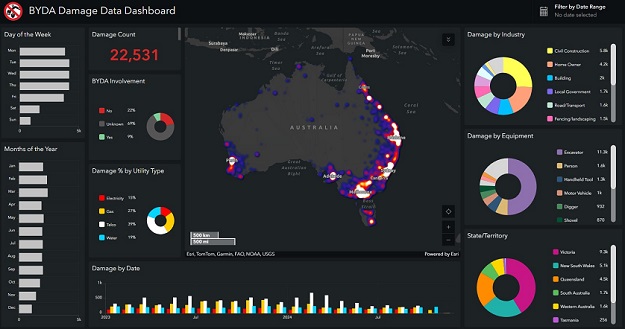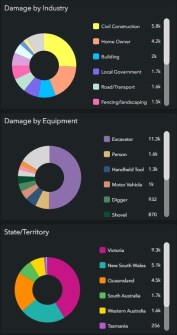
Before You Dig Australia (BYDA) is calling for urgent reforms to address $5 billion in economic losses caused annually by preventable utility strikes.
New research from BYDA reveals that most of strike incidents stem from outdated regulations, low data standards and insufficient workforce training.
“$5 billion a year in preventable damage is an unacceptable burden on the Australian economy. It’s time for a national overhaul of how we manage utility risks,” said Mell Greenall, CEO of BYDA.
“Our research shows that with the right reforms, we can significantly reduce these incidents, protect workers, and save billions for the economy. This is a national issue that demands immediate attention and coordinated action.”
Read our interview with BDYA’s Mell Greenall.
One of the recommended reforms is for the development of nationally consistent legislation for underground asset management. Only New South Wales currently mandates asset registration with BYDA for electricity, gas, and oil, while other states lack uniform requirements.
Another recommendation is for mandatory digital standards for utility location data. According to BYDA, utility location data is often of low quality and accuracy, is outdated, is presented at predominantly at Quality Level D (the lowest standard under Australian Standard 5488), and is typically delivered in PDF format. Reliance on outdated methods persists despite the availability of higher-quality digital data, such as engineering-validated as-built plans, surveyor reports and utility locator information.

BYDA says that establishing minimum data standards and developing a digital asset register for utility locations would lead to a $782 million annual saving through reduced utility strikes.
It also cites international models, such as the UK’s National Underground Asset Register, in showing how secure digital systems can reduce errors, prevent delays and minimise utility strikes.
“We have the tools to fix this — better data, stronger laws, and a skilled workforce,” said Greenall.
“We need leaders from the utility, construction and government sectors to come together and support these reforms.”






